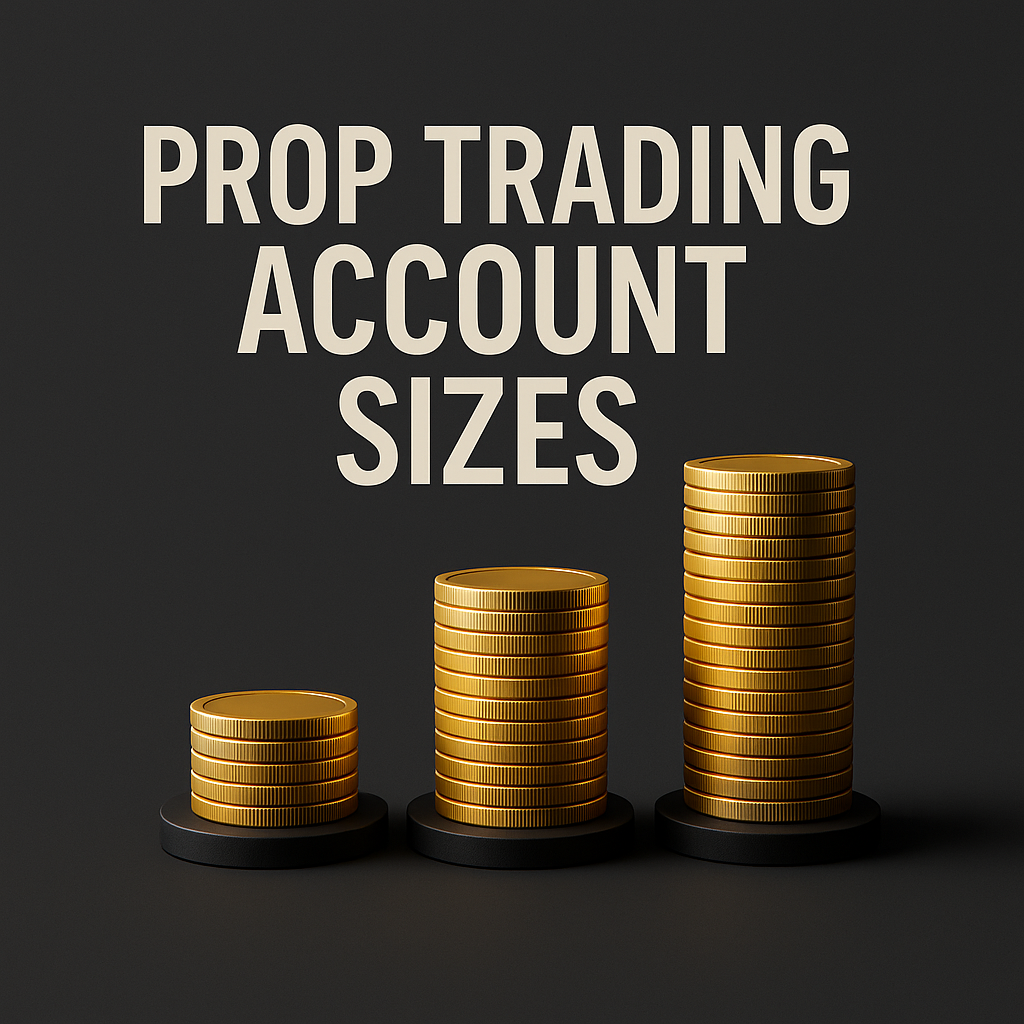Which Prop Account Size is Right for Your Strategy?
When it comes to prop trading account sizes, choosing the right one can make or break your performance. Whether you’re a swing trader, scalper, or algorithmic strategist, your account size plays a critical role in managing risk, reaching targets, and staying emotionally grounded.
Unfortunately, many traders overlook how account size affects psychological pressure, strategy flexibility, and even the evaluation process. In this article, you’ll learn how to align your trading style with the right account size—and avoid costly mistakes in the process.
Why Prop Trading Account Sizes Matter
The size of your prop account is more than just a number—it defines the structure of your trading experience. It directly impacts:
-
Your daily and overall drawdown limits
-
Profit target thresholds
-
Emotional resilience
-
Capital efficiency
-
Leverage control
Choosing a size that suits your strategy can significantly reduce stress and help you stay within the rules—especially during evaluations. For example, a conservative swing trader may find smaller accounts too restrictive, while a high-frequency scalper could thrive under those same limits.
Matching Account Size to Strategy Type
Not every strategy performs well under the same account conditions. Here’s how to evaluate the best fit:
1. Scalping Strategies
Scalping involves executing numerous trades with small profit targets. This style demands tight risk control and minimal drawdown impact. Therefore, a mid-sized account ($25,000 to $50,000) is often a smart choice.
Such accounts usually offer enough margin to support frequent trades, without excessive exposure. On the other hand, starting too small may restrict your ability to execute the strategy effectively.
2. Swing Trading
Swing traders typically hold positions for days or weeks. These setups need wider stop losses and more drawdown flexibility. That’s why larger prop trading account sizes ($50,000 to $100,000) are ideal—they provide room to withstand market fluctuations and hit longer-term targets.
3. Algorithmic Strategies
Automated trading systems benefit from stability and volume. Depending on your algorithm, you might require a smaller account for testing or a larger one to manage multiple open positions.
The key consideration here is margin availability. If your system trades across several instruments simultaneously, a higher balance will allow for uninterrupted performance.
Key Factors to Consider When Choosing Your Prop Account Size
Before deciding, assess these core elements:
1. Risk Tolerance
Are you emotionally prepared to manage larger drawdowns? While smaller accounts limit losses, they also limit potential. Bigger accounts offer more freedom but require stronger discipline and emotional control.
2. Evaluation Rules
Review the firm’s rules carefully. A $10,000 account may seem affordable, but it could come with tighter loss limits or stricter profit goals. A $100,000 plan, while more flexible, demands more consistent management.
3. Trading Style
Your trading style should determine your account size. Intraday traders need fast capital rotation, while long-term strategies benefit from more room to operate.
4. Psychological Pressure
Higher account sizes often lead to higher expectations. Many traders feel overwhelmed and make poor decisions because they weren’t mentally ready. It’s smarter to start small and scale up gradually.
How to Scale Up Wisely
Once you’ve built consistency, scaling your account can accelerate growth. But it must be done strategically.
-
Start small: Choose a size you can manage with discipline.
-
Master the evaluation phase: Stick with one setup until it works reliably.
-
Upgrade progressively: Increase size only when you feel emotionally detached from the dollar amount.
-
Track your metrics: Monitor P&L, identify drawdown zones, and evaluate performance regularly.
Larsa Capital makes it easy to grow with flexible upgrade options. You can move to a larger tier without restarting your entire evaluation process.
Common Mistakes When Choosing Account Size
Avoid these pitfalls:
-
Jumping into large accounts too soon
-
Choosing solely based on price
-
Ignoring strategy-specific needs
-
Lacking long-term planning
Making an informed choice from the start prevents setbacks down the road.
Final Thoughts: Choose Account Size with Strategy in Mind
In prop trading, success doesn’t rely only on skills—it depends on structure. Choosing the right account size is a foundational decision that shapes your discipline, strategy execution, and trading mindset.
By aligning your account size with your trading style, you’ll trade with more clarity and confidence. Whether you’re just beginning or ready to scale, the right prop trading account sizes help you focus on execution—not anxiety.

